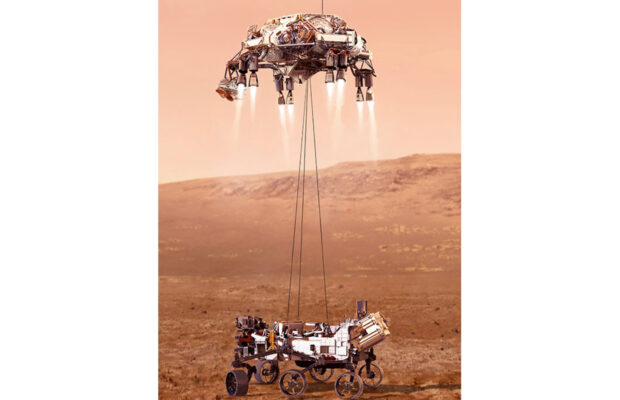Perseverance lands on Mars

The Mars 2020 Perseverance rover landed on the Red Planet on Feb. 18. According to a statement from the National Aeronautics and Space Administration (NASA), the rover’s main task is to “seek signs of ancient life and collect samples of rock and regolith (broken rock and soil) for possible return to Earth.”
The rover, manufactured by the Jet Propulsion Laboratory, is approximately 10 feet long, 9 feet wide and about 7 feet tall. NASA refers to the body of the rover as the warm electronics box (WEB). The main function of the WEB is to “carry and protect the computer, electronic and instrument systems.”
The rover is built similarly to a convertible car with a small helicopter, named Ingenuity, tucked underneath it. Cameras sit on top of the vehicle at the “Rover Equipment Deck,” allowing for clear shots of the terrain as the rover moves. Perseverance’s creation heavily relied on the design of the Curiosity rover, which launched in 2011, although there are some differences. Perseverance has a larger turret, or hand, and thus the body was altered to accommodate the heavier attachment, making it bigger and heavier. Weight plays a significant role in the rover’s ability to land properly.
In order to complete the journey, Perseverance was traveling at nearly 12,500 miles per hour. A few minutes before entering Mars’s atmosphere, the rover released its cruise stage, which included solar panels, radios and fuel tanks that were used during its journey. Only the protective layer and the rover itself continued the descent.
Immediately after landing, Perseverance took three pictures of the terrain and got a recording of the planet’s atmosphere, allowing NASA to receive more data about Mars.



